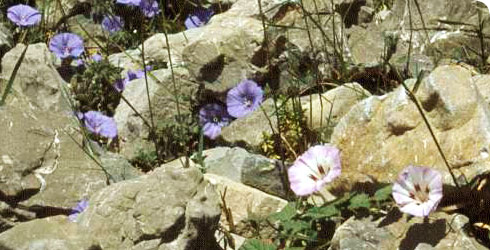Distribution
This species was first discovered by the Spanish botanist Vidal López in 1921. He collected it close to the town of Chefchaouen in north-western Morocco.
Convolvulus vidalii was first discovered by the Spanish botanist Vidal López in 1921. He collected it close to the town of Chefchaouen in north-western Morocco.
Between 1921 and 2004, despite much botanical activity in the region, it was only collected on a further eight occasions.
In 2004, botanists from the Natural History Museum, together with colleagues from l’Institut Agronomique et Vétérinaire Hassan II in Rabat, Morocco and The University of Reading in the UK started to investigate the distribution and status of this poorly-known species.
Fieldwork showed that C. vidalii is very restricted in its distribution. It is confined to the southwest foothills of a mountain called Jebel Tissouka where it occurs only within a narrow altitudinal belt between 650m and 1000m.
Within this very small area however, it is quite common. It occurs on rocky limestone slopes and in the margins of cultivated areas throughout the area.
Why should this bindweed species be so restricted but relatively common where it does occur? The geology of northwestern Morocco is extremely complex and its distribution may be explained by very specific soil requirements.
